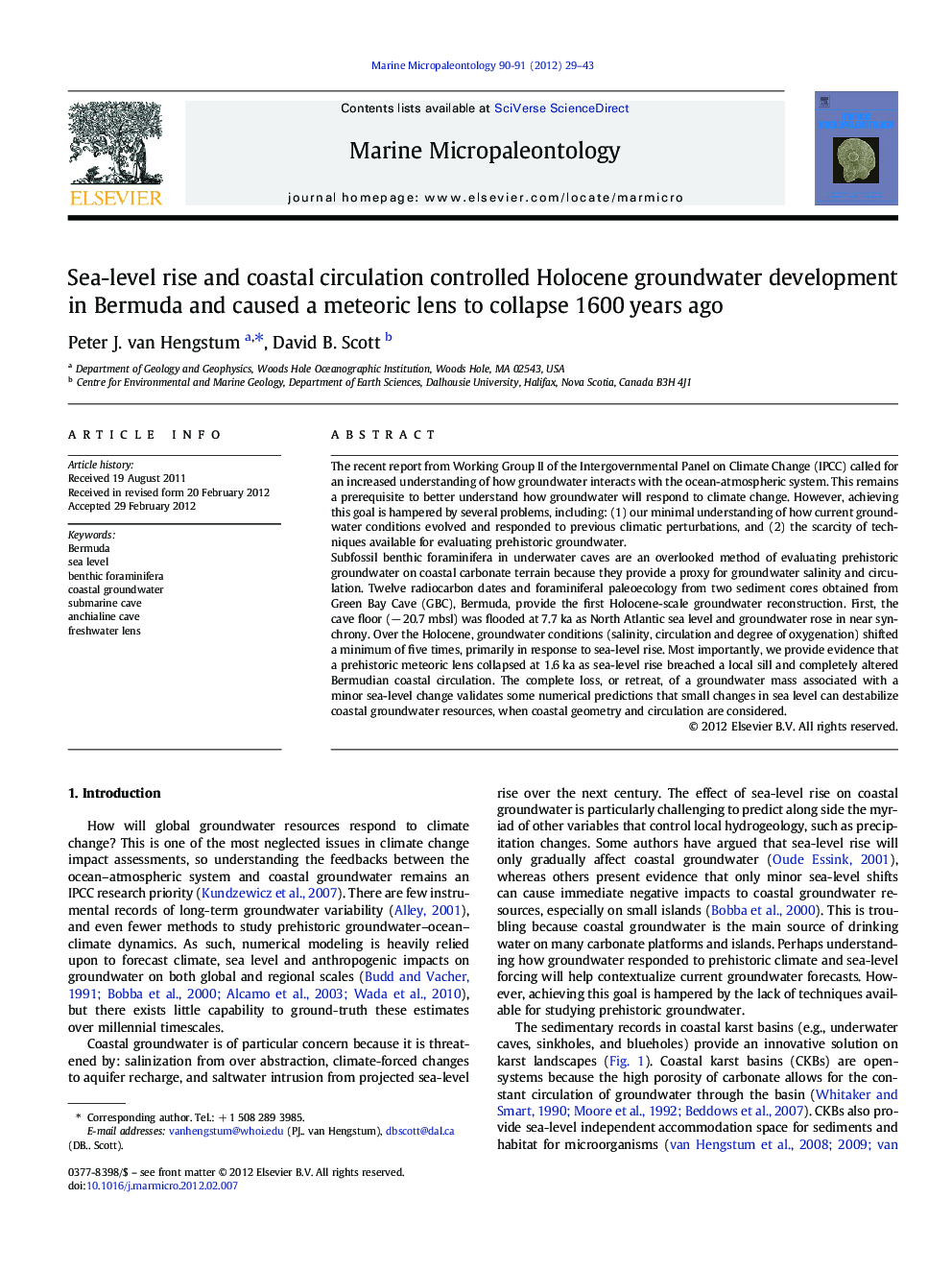| Article ID | Journal | Published Year | Pages | File Type |
|---|---|---|---|---|
| 4749045 | Marine Micropaleontology | 2012 | 15 Pages |
The recent report from Working Group II of the Intergovernmental Panel on Climate Change (IPCC) called for an increased understanding of how groundwater interacts with the ocean-atmospheric system. This remains a prerequisite to better understand how groundwater will respond to climate change. However, achieving this goal is hampered by several problems, including: (1) our minimal understanding of how current groundwater conditions evolved and responded to previous climatic perturbations, and (2) the scarcity of techniques available for evaluating prehistoric groundwater.Subfossil benthic foraminifera in underwater caves are an overlooked method of evaluating prehistoric groundwater on coastal carbonate terrain because they provide a proxy for groundwater salinity and circulation. Twelve radiocarbon dates and foraminiferal paleoecology from two sediment cores obtained from Green Bay Cave (GBC), Bermuda, provide the first Holocene-scale groundwater reconstruction. First, the cave floor (− 20.7 mbsl) was flooded at 7.7 ka as North Atlantic sea level and groundwater rose in near synchrony. Over the Holocene, groundwater conditions (salinity, circulation and degree of oxygenation) shifted a minimum of five times, primarily in response to sea-level rise. Most importantly, we provide evidence that a prehistoric meteoric lens collapsed at 1.6 ka as sea-level rise breached a local sill and completely altered Bermudian coastal circulation. The complete loss, or retreat, of a groundwater mass associated with a minor sea-level change validates some numerical predictions that small changes in sea level can destabilize coastal groundwater resources, when coastal geometry and circulation are considered.
► We provide the first ever Holocene groundwater reconstruction from Bermuda. ► Bermudian cave foraminifera are used as a long-term groundwater proxy. ► Groundwater salinity, oxygenation and circulation changed five times. ► Sea-level rise and coastal circulation controlled local groundwater. ► A minor sea-level shift (< 1 m) collapsed a meteoric lens 1600 years ago.
